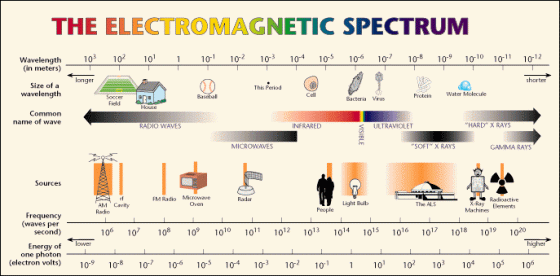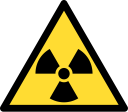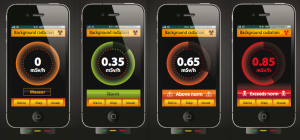So we’re working with an industrial CT-Scanner which uses “harmful” X-rays. Harmful because X-rays belong to the spectrum of electromagnetic waves that have ionizing effects, which have devastating consequences on organic tissue. Logically at first we weren’t too comfortable around all those radiation hazard signs. But we took some time to educate ourselves.
 Turns out in industrial applications the use of these harmfull ionizing waves doesn’t really matter. Clearing up a common misconception first;
Turns out in industrial applications the use of these harmfull ionizing waves doesn’t really matter. Clearing up a common misconception first;
After an object is scanned there is no residual radiation left within the object or the source. Applied to daily life: our irradiated food or scanned luggage at the airport/metro hold no risk of any health dangers due to radiation.
Induction of radiation in materials is possible but requires a high critical threshold that is only reached when exposed to very high levels of X- or gamma rays. On top of that, induced radiation usually has a very short decay half-life.
Food and objects from the area around the Fukushima power plant disaster are potentially dangerous because they could be contaminated with airborne radioactive particles that originated from the plant site.
Irradiated food is a controversial topic, but this is mainly due to the discussion of creating ‘free radicals’ and killing the naturally present ‘healthy’ bacteria within foodstuffs. ( If you want more information on why food irradiation is applied please read the text on this page [Dutch] : http://www.gezondheid.be/index.cfm?fuseaction=art&art_id=16733 ).
The active sources in these machines do however hold radiation poisoning risks, but it’s ‘easy’ to protect the machine operators by placing thick (lead) shields around the testing chamber that absorb all emitted waves and placing sensors or ‘dosimeters’ around the operational area and on the staff. There’s even development going on to create dosimeters that can be attached to your smartphone
http://www.ewdn.com/2012/01/14/smartphone-compatible-dosimeter-radiometer-receives-support-from-skolkovo/X-ray
Scanners used for medical purposes and ‘body scanners’ used in some airports do hold some controversial radiation health dangers, but that’s a topic for a next blog.
So after reading all this, what’s your take on non-medical uses of X-rays? Still weary of touching your bag after passing customs in the airport? And afraid your apple might grow some legs after irradiation? Post your thoughts.


” …it’s ‘easy’ to protect the machine operators by placing thick (led) shields around the testing chamber that absorb all emitted waves…”
How do these led shields absorb X-rays?
You are trying to calm peoples’ nerves with rational information about X-rays in this post. However, would you not agree that the devices you are working with still possess the power to seriously harm you and others if they were to malfunction or wrongfully operated?
LikeLike
*It was pointed out to me that I mistyped ‘lead’ ( I wrote ‘led’ ), my apologies. I corrected this typo in the post.
I’ll try to provide a brief reply on the first part:
On an atomic level the radiation waves (photons) collide with the electrons of the lead atoms, losing their high energy in the process. Lead is chosen because it is dense and has a high number of electrons per atom.( Other materials could be used, but lead offers the most compact solution.)
If the shield is thick enough eventually no waves will get trough anymore as all of the energy is absorbed and scattered throughout the material. This process does cause lead to degrade after some time, so you are right to question its operation !
On the second part you are perhaps right, the major emphasis of our thesis is based on ‘fool-proofing’ one of these machines against misuse, so yes they can still fail and cause serious harm.
But this can be said about any technology of course, wouldn’t you agree that your last sentence could be applied to, lets say, cars as well for example?
LikeLike
If they are as you say not harmful I don’t see why we would get rid of them. These machines can be very useful and maybe safe lives (airport scanners).
On the other hand I don’t think this app is a good idea. If you let the people scan the whole neighborhood and everything they touch people will get paranoia. Some objects emit some radiation but in small doses it is not harmful at all. People will start scanning things and get scared if they scan even the smallest amount of radiation in their surroundings.
LikeLike